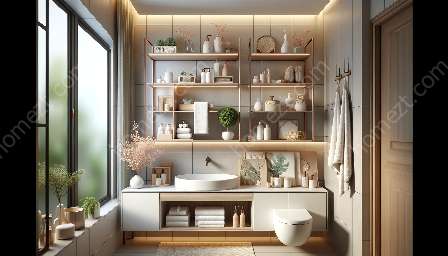As a critical component of retail trade, signage plays a pivotal role in the store layout and design. Effective signage can significantly impact the shopping experience and customer engagement, ultimately contributing to the success of retail businesses. In this comprehensive guide, we will delve into the significance of signage in retail, its relationship with store layout and design, and best practices for creating compelling signage to enhance the overall shopping environment.
The Importance of Signage in Retail Trade
Signage serves as a powerful communication tool that conveys information, guides customers, and influences purchasing decisions. Well-designed and strategically placed signage can capture the attention of shoppers, communicate brand messages, highlight promotions, and facilitate wayfinding within the store. Moreover, signage also contributes to the overall ambiance and aesthetic appeal of the retail environment, creating a welcoming and engaging atmosphere for customers.
Enhancing Store Layout and Design
Effective signage is an integral part of store layout and design, as it directly impacts the flow of traffic within the retail space. Thoughtfully positioned signage can lead customers through different sections of the store, draw attention to specific product displays, and create focal points that drive interest and exploration. By incorporating signage into the layout, retailers can optimize the use of space and enhance the overall customer journey, resulting in increased dwell time and a higher likelihood of making purchases.
Types of Signage
There are various types of signage that retailers can utilize to enrich the store environment and influence consumer behavior. These include:
- Exterior Signage: This includes storefront signs, window displays, and directional signs that attract passersby and guide them into the store.
- Wayfinding Signs: These signs help customers navigate through the store, locate specific departments, or find essential facilities such as restrooms and fitting rooms.
- Promotional Signage: Used for advertising sales, special offers, and new arrivals, promotional signage captures attention and drives impulse purchases.
- Informational Signs: These signs provide product details, pricing information, and other relevant data that aids customers in making informed decisions.
Best Practices for Effective Signage
To maximize the impact of signage in retail trade and store design, retailers should consider the following best practices:
- Clarity and Readability: Signage should be easily readable from various distances and angles, with clear fonts and concise messaging.
- Consistency: Maintain a consistent design theme throughout the store to reinforce brand identity and create a cohesive shopping experience.
- Strategic Placement: Position signage at eye level, near key product displays, and along customer pathways to ensure maximum visibility.
- Visual Appeal: Use vibrant colors, compelling graphics, and high-quality materials to make signage visually appealing and attention-grabbing.
- Adaptability: Design signage that can be easily updated and modified to reflect seasonal promotions, new product releases, and changing store layouts.
Conclusion
In conclusion, signage plays a crucial role in retail trade and store layout, impacting customer behavior, brand perception, and overall sales performance. By understanding the significance of signage and implementing effective strategies, retailers can create an inviting and immersive shopping environment that enhances customer engagement and fosters loyalty. Investing in compelling signage not only contributes to the aesthetics of the store but also serves as a strategic tool for influencing consumer decisions and driving business success.




